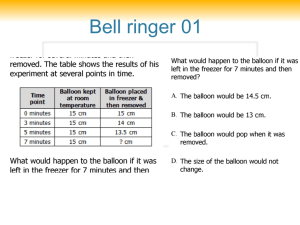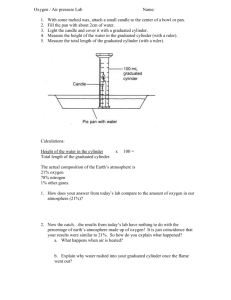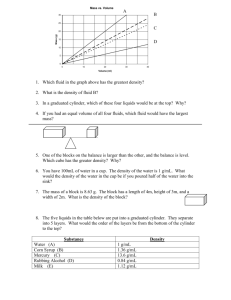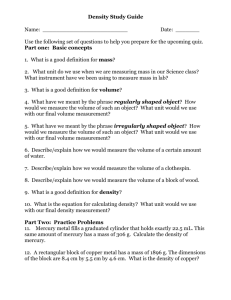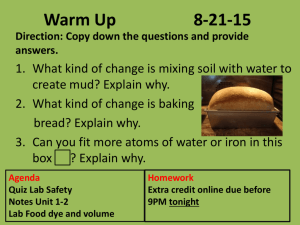Density Lab
advertisement
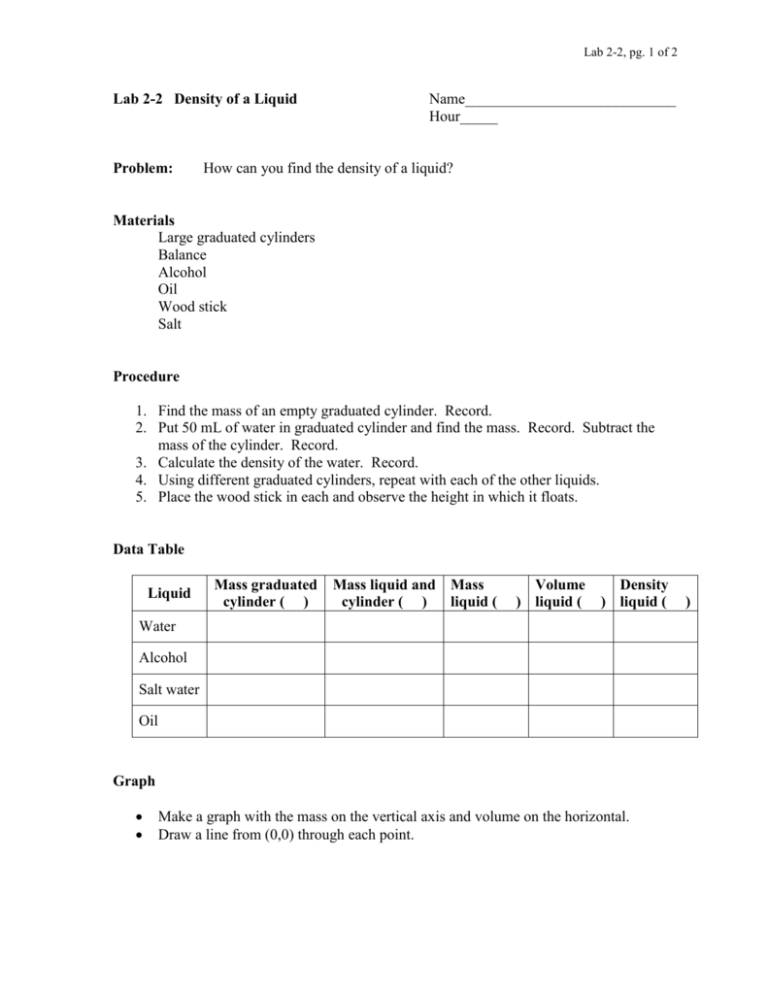
Lab 2-2, pg. 1 of 2 Lab 2-2 Density of a Liquid Problem: Name____________________________ Hour_____ How can you find the density of a liquid? Materials Large graduated cylinders Balance Alcohol Oil Wood stick Salt Procedure 1. Find the mass of an empty graduated cylinder. Record. 2. Put 50 mL of water in graduated cylinder and find the mass. Record. Subtract the mass of the cylinder. Record. 3. Calculate the density of the water. Record. 4. Using different graduated cylinders, repeat with each of the other liquids. 5. Place the wood stick in each and observe the height in which it floats. Data Table Liquid Mass graduated cylinder ( ) Mass liquid and Mass cylinder ( ) liquid ( Volume ) liquid ( Density ) liquid ( Water Alcohol Salt water Oil Graph Make a graph with the mass on the vertical axis and volume on the horizontal. Draw a line from (0,0) through each point. ) Lab 2-2, pg. 2 of 2 Conclusion 1. In which liquid did the wooden stick float the highest? Lowest? 2. Which has a greater mass 1L of water or 1L of alcohol? Why? 3. Which takes up a greater volume, 1 kg of water or 1 kg of alcohol? Why? 4. Which has a greater density 50 mL of water or 1 L of water? Why? 5. If an egg sinks in fresh water but floats in salt water, which type of water has a greater density? 6. Describe the density of an egg in relation to fresh and salt water. 7. What would happen if the liquids from this lab were poured and mixed together into a beaker? (Show them in order, least to most dense). 8. If the alcohol started on fire, could you put it out with water? Why? 9. Read II Kings 6:1-6. In verse 6, which was more dense iron or water? Why?






